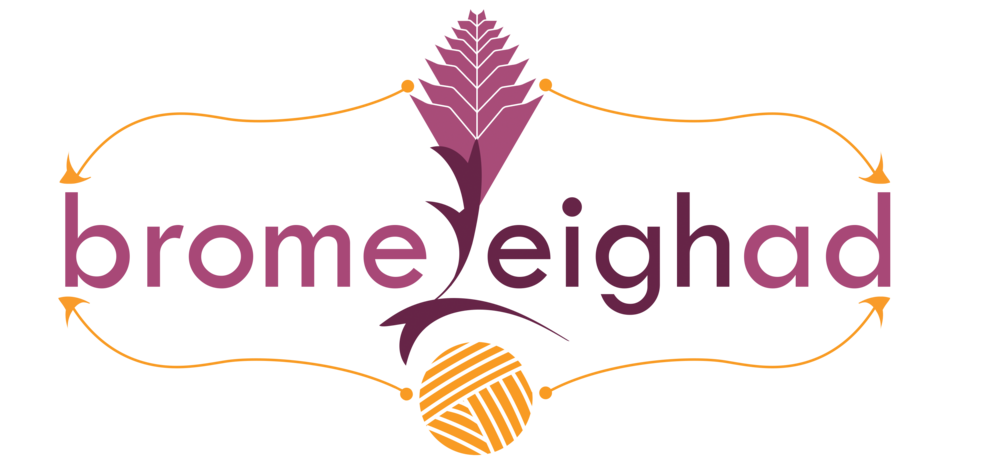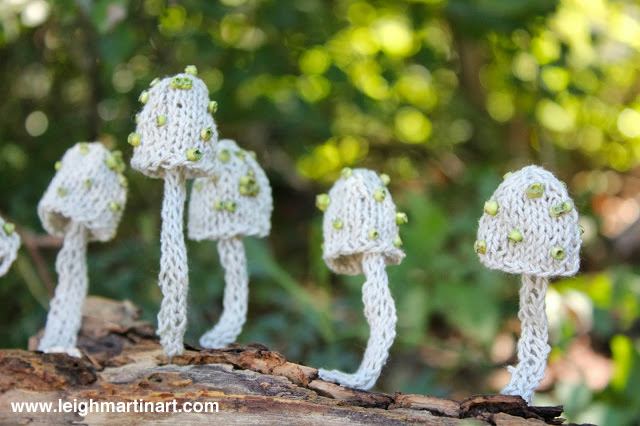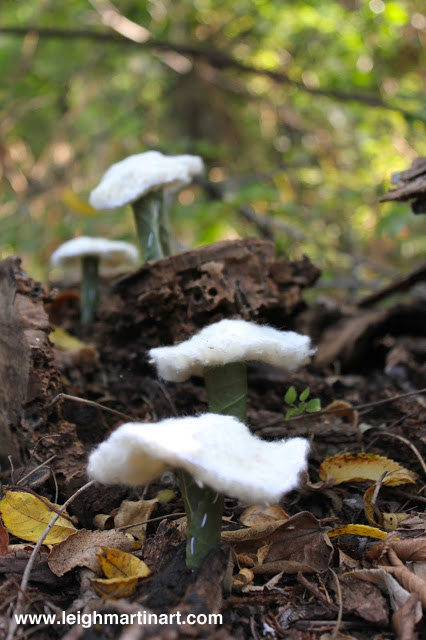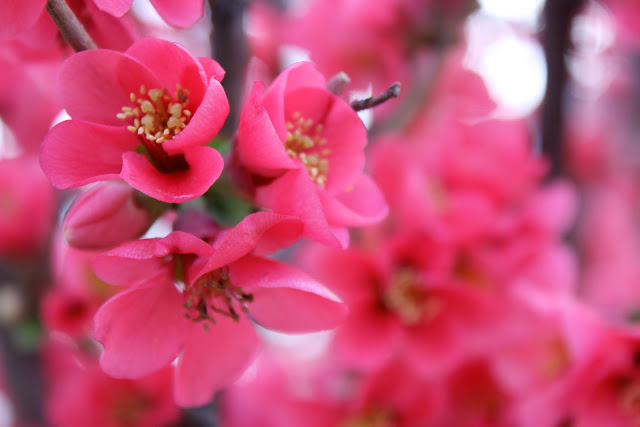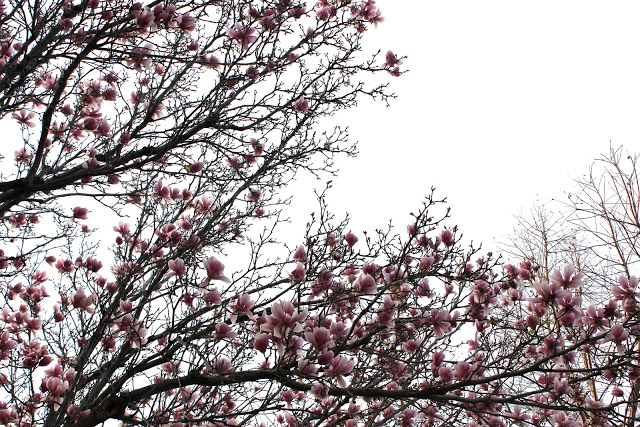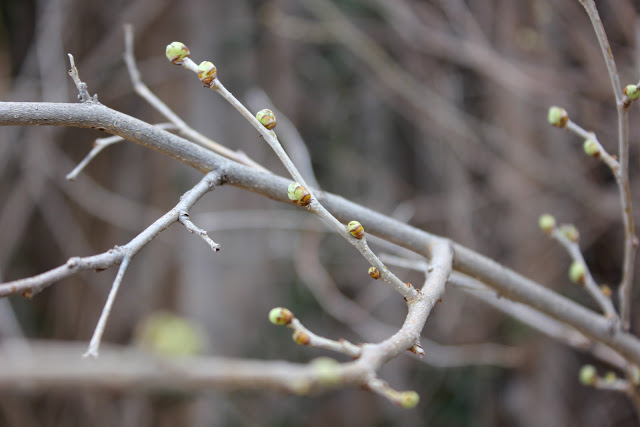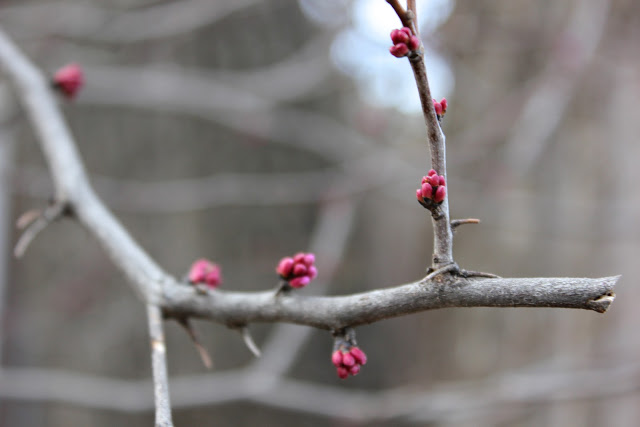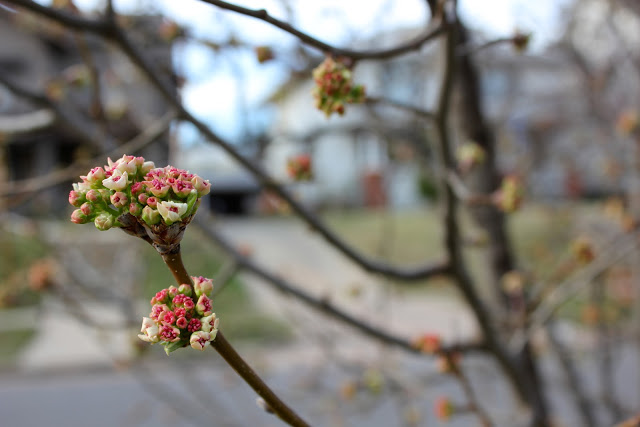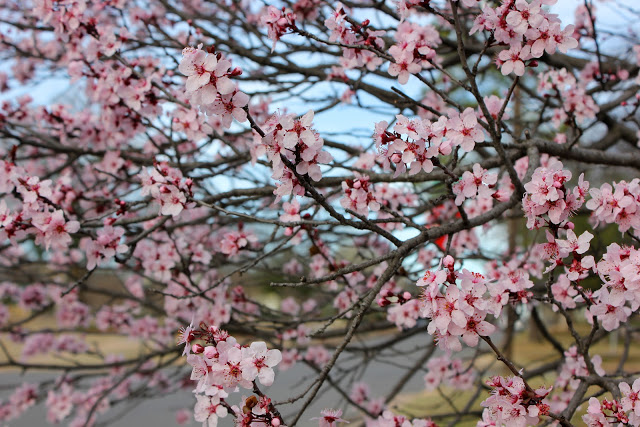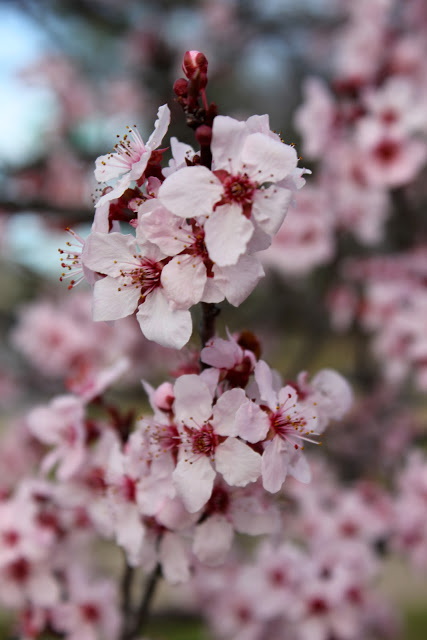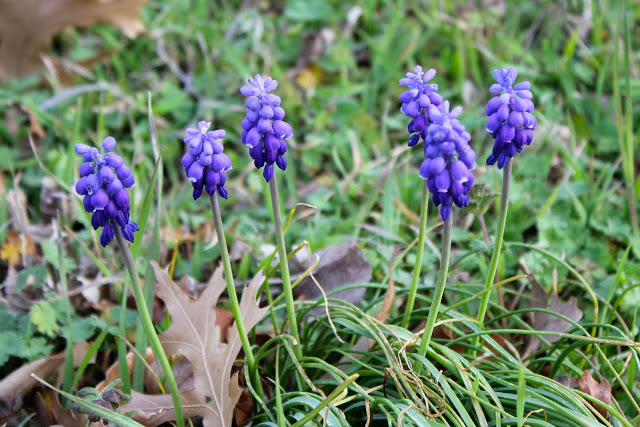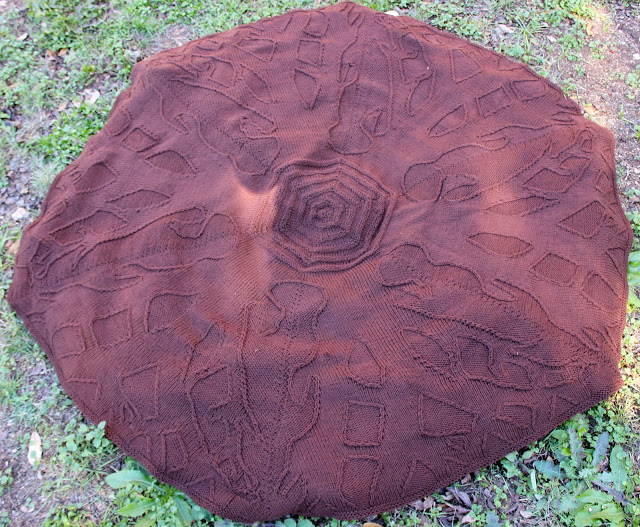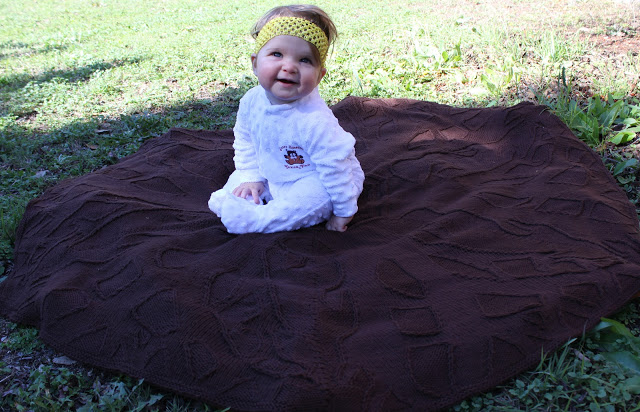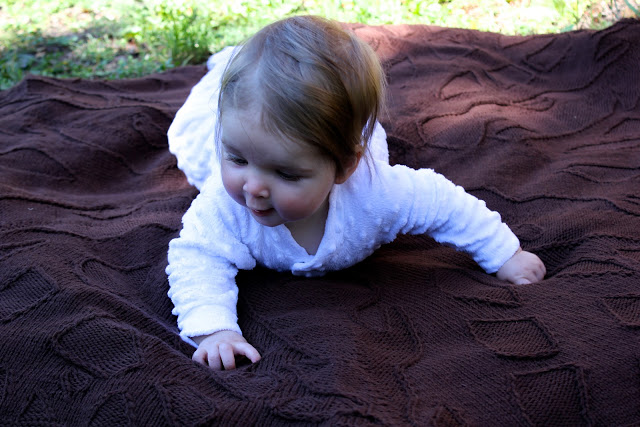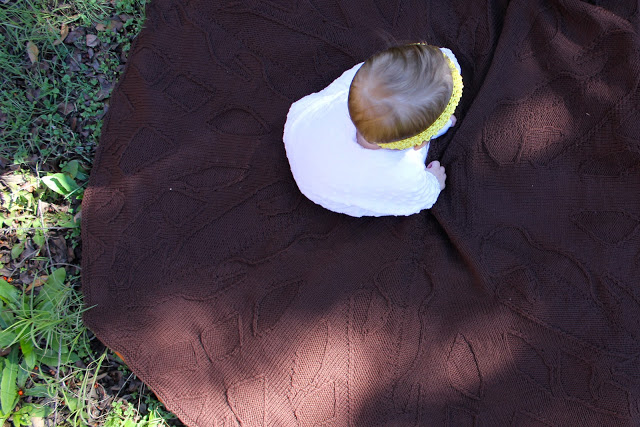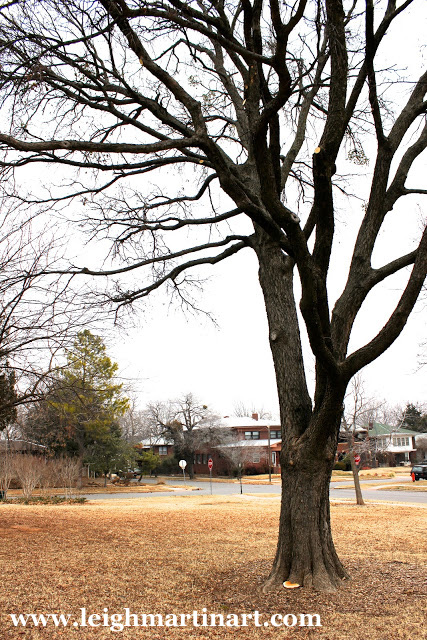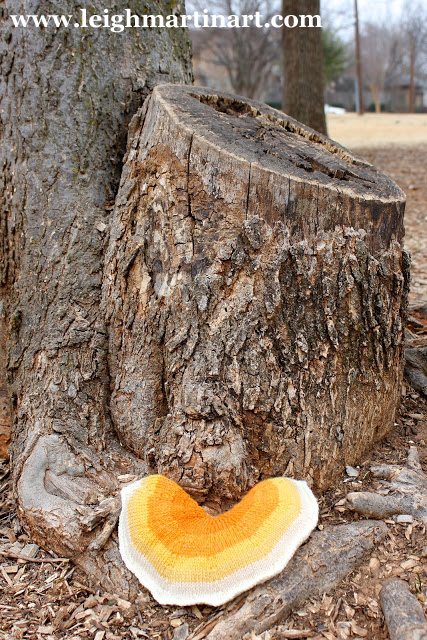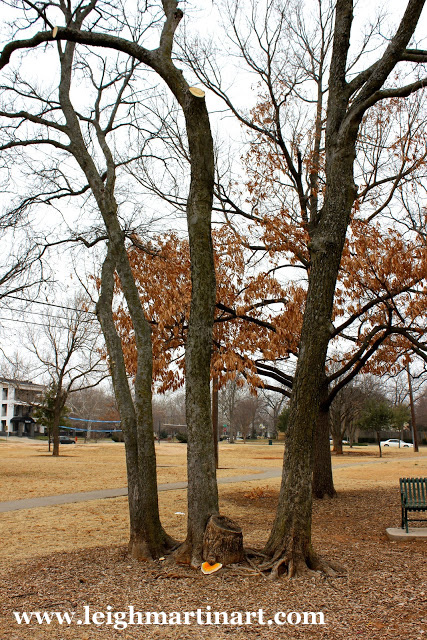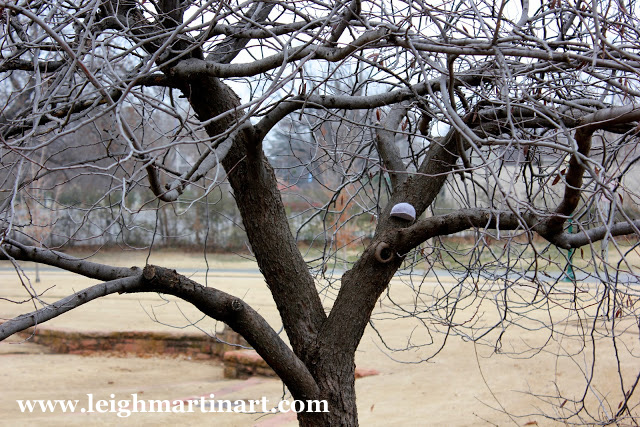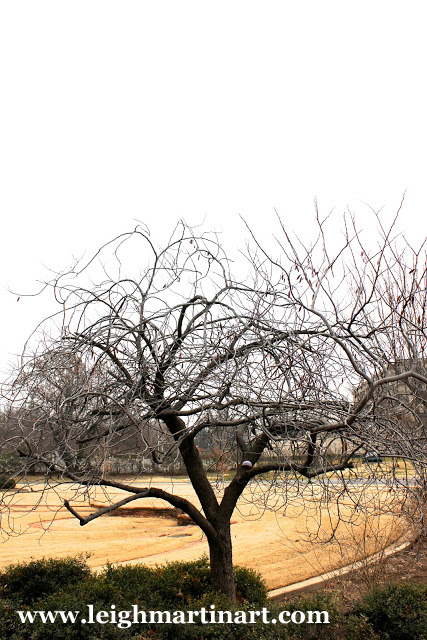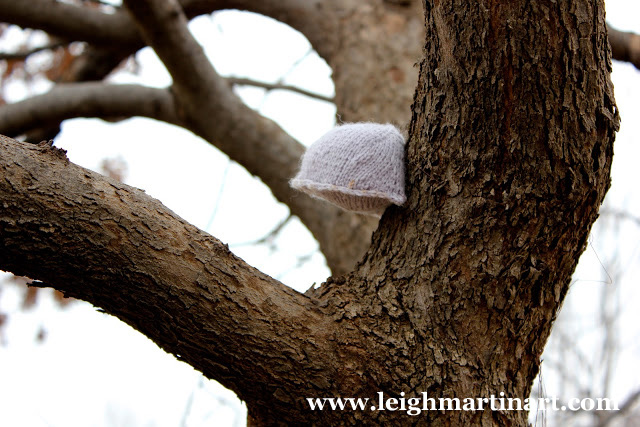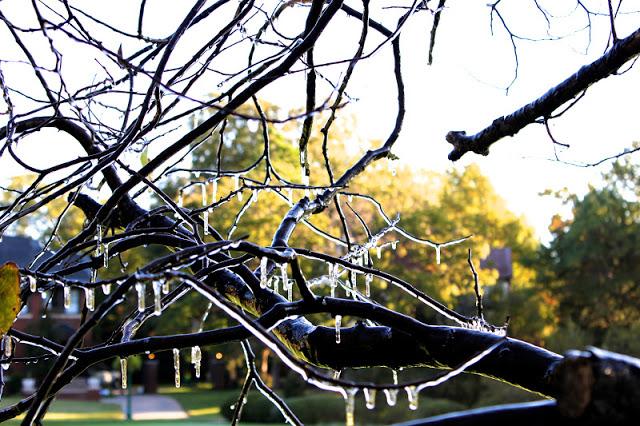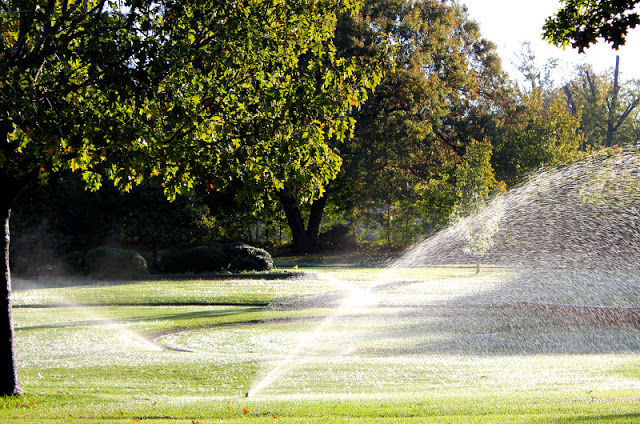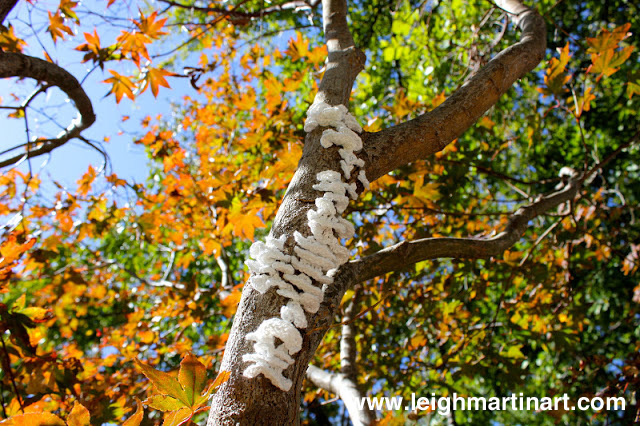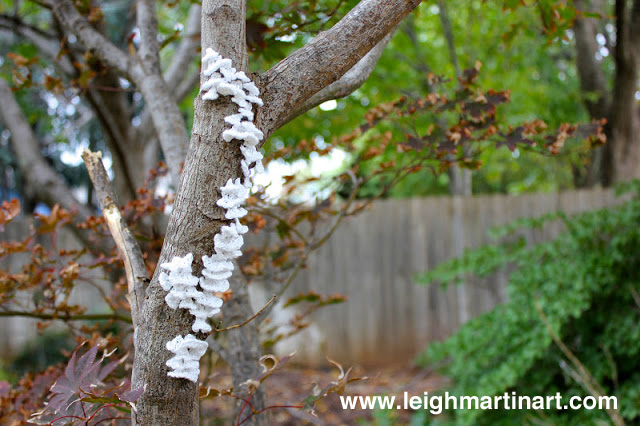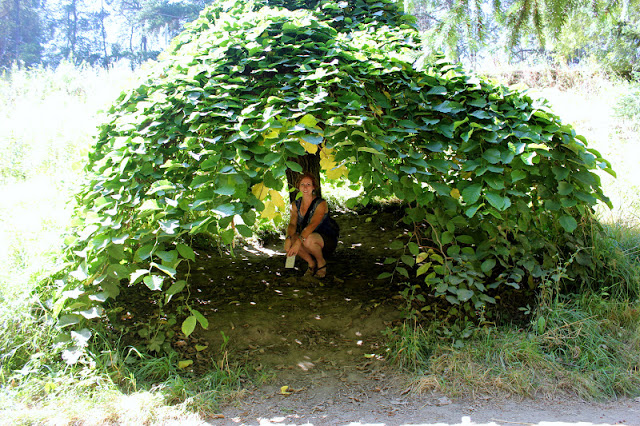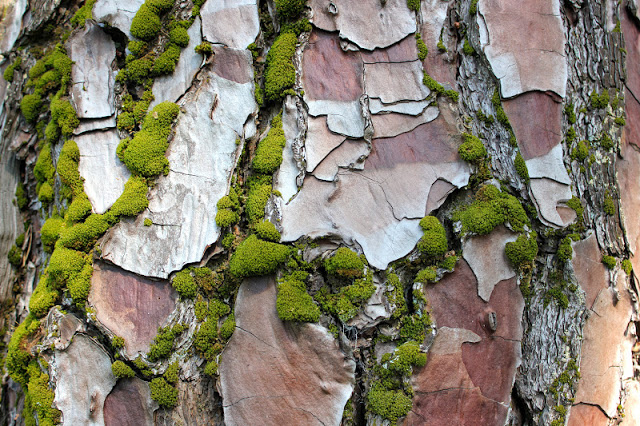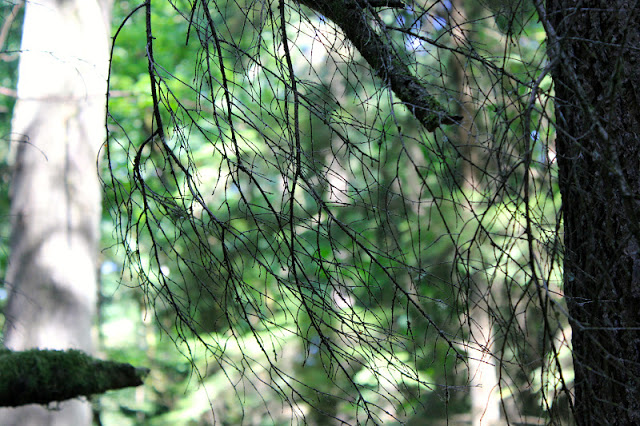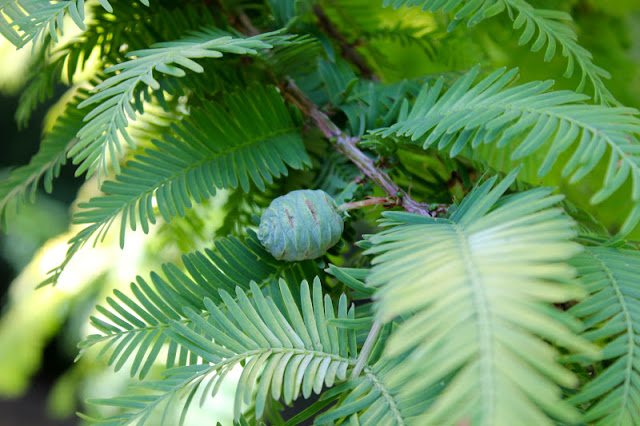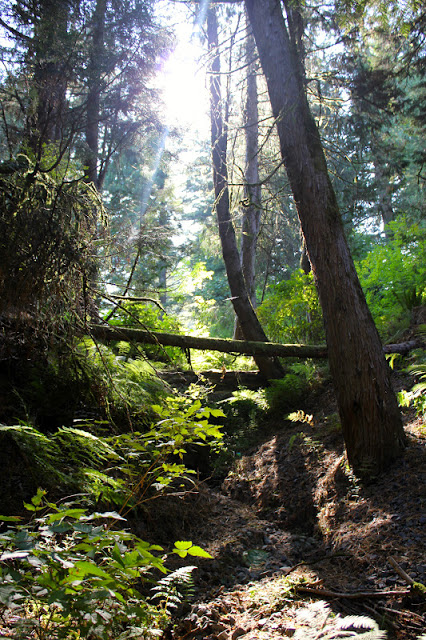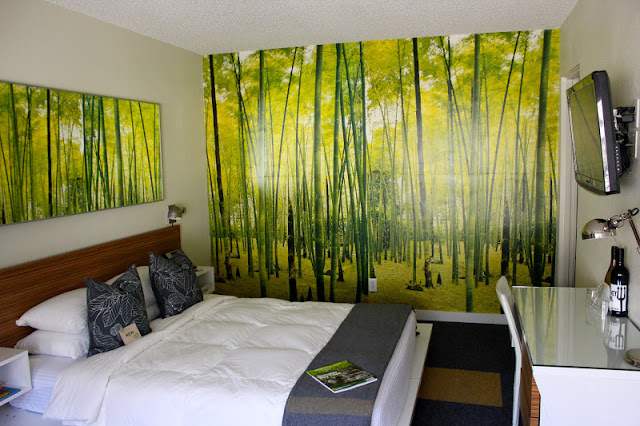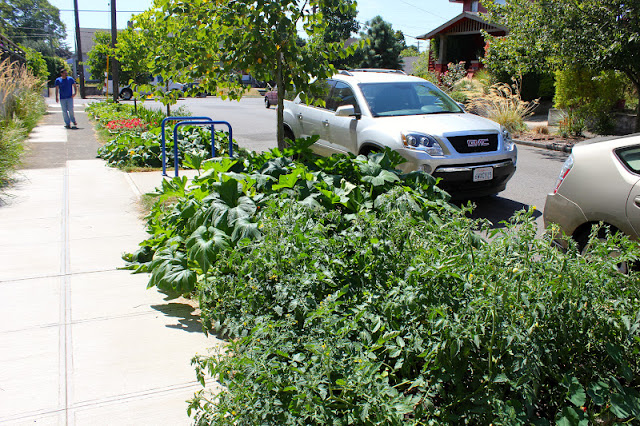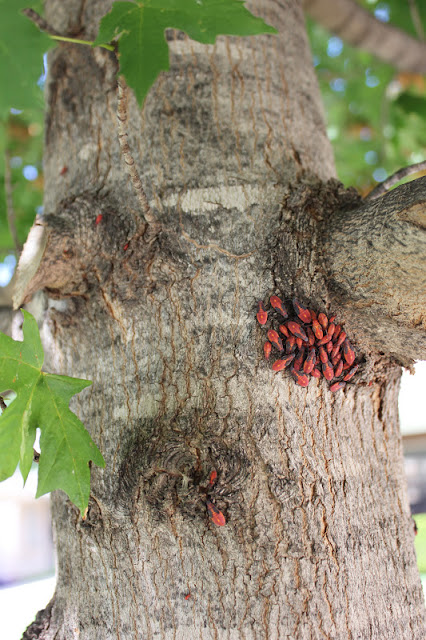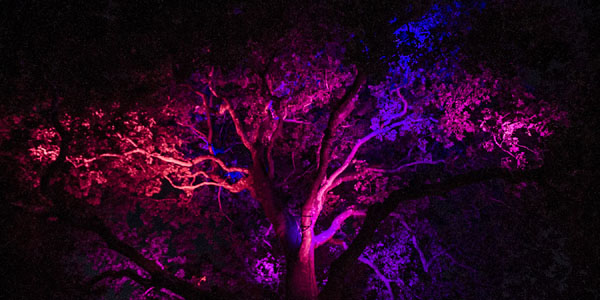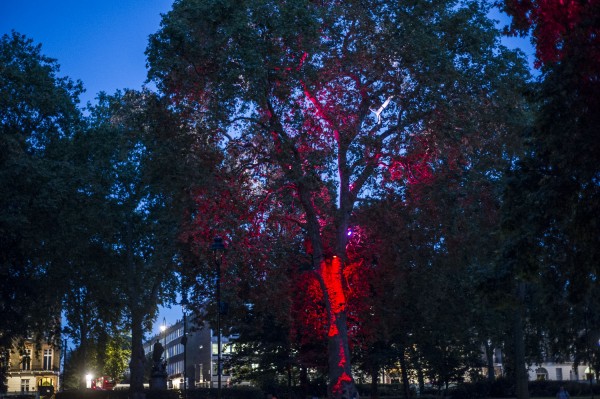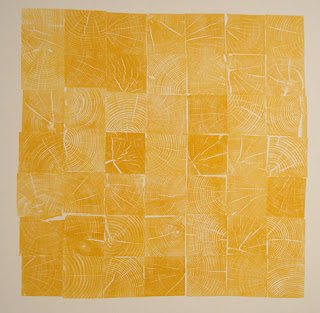Saprobia || Celtis Occidentalis
Saprobia || Populus deltoides
Signs of Spring
BIG THING #1 aka Off the Needles || Foundation
52 Forms of Fungi || #3
52 Forms of Fungi || #2
I had a question from Misti recently about whether I record the patterns for these pieces that I'm working on as I go. The answer is YES, I write them down in case the result is something that I really like and want to duplicate. For instance, I am already in the process of making more of the forms depicted in this post for a larger installation. If any of the pieces have potential to be incorporated into the Decomposition series, I've gotta have some record of what I did! In any case...
This polypore was inspired by some conks I saw out in a natural area recently. The ones I looked at were white in color, but I was purchasing yarn recently and this shade of Knit Picks Palette, called "Pennyroyal", grasped my attention and I knew I had to do something with it. A project idea came to mind and this is the first piece for that project. I've been using the Palette yarn A LOT lately, and it's quickly becoming a favorite for these types of projects... so many great colors!
This is the first "fungi" that I've attached only temporarily to a living tree, so it was fun trying out a way to do that (which worked pretty well). On that note, no trees were harmed during the installation of this fungi! Although, there was a power-walker who kept circling the nearby trail and was giving me some really funny looks. It made me giggle to myself a little bit... I can already tell that this project is going to be a lot of fun! Are you ready for more?
View more posts about the 52 Forms of Fungi project.
A Blue Tree Grows in Sacramento
Fortunately, I managed to avoid an existential crisis through a run-in with the Sacramento Tree Foundation, who told me what's up. The trees are not blue. Well, they ARE blue, but not naturally anyway. (Well of course, I know my tree morphology and know that North American trees are not typically blue).
These trees are a part of an art installation that Sactree.com states is an "effort to call attention to global deforestation, and is supported by several local organizations and businesses because of its ability to call attention to Sacramento's valuable urban forest." There is no paint involved, and no toxic substances are applied to the trees or anything that would clog lenticels or cause harm to the tree. The blue color is a non-toxic dye pigment that will last for no more than six months, before it weathers away.
Konstantin Dimopoulos is the brilliant mind behind this project, which he has also taken to Melbourne, Vancouver, Auckland, Seattle, and Gainesville, FL. Below is a description of the project and the meaning behind it:
"The Blue Trees is a social art action. Through colour I am making a personal statement about the spirituality of trees and their importance to our very survival: trees are the lungs of the planet.
Colour is a powerful stimulant, a means of altering perception and defining space and time. The fact that blue is a colour that is not naturally identified with trees suggests to the viewer that something unusual, something out of the ordinary has happened. It becomes a magical transformation.
In nature colour is used both as a defensive mechanism, a means of protection, and as a mechanism to attract. The Blue Trees attempts to waken a similar response from viewers. It is within this context that the blue denotes sacredness, something reverential.
Trees are largely invisible in our daily lives, and it’s not until it’s too late that we realise how important they are to us both aesthetically and environmentally. Each year an area at least the size of Belgium of native forests is cleared from around the planet.
Yet while we do this we look at whether other planets can be inhabited, so we’ve got somewhere else to go once we’ve destroyed our own.
The colour used on the trees is biologically safe pigmented water. As an ephemeral artwork, the colour will naturally degrade and the trees gradually revert to their natural state."
I love it when nature and art collide. If given the opportunity, be sure to check these out!
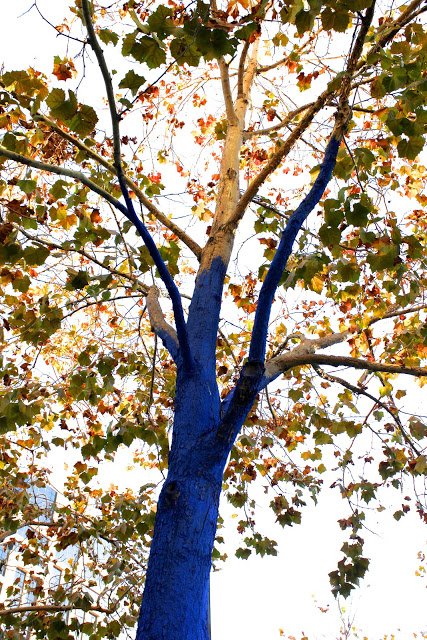
Already Frozen
I was scoping out photo backdrops for finished knitting projects on a recent Saturday morning and came across this ice coated red bud tree. Normally, irresponsible lawn irrigation tends to get under my skin, but glimpsing the morning light through ice crystals and fall color on one of the first really cold days of the year just softened my heart a little bit and I had to get a closer look. I still think people should pay more attention to their irrigation scheduling as it relates to the weather forecast, but I'm glad I got to witness something magically beautiful.
Decomposition: Stacks
Here is the final product from my installation of Stacks, the next phase of my Decomposition series. For more information about this phase, or to watch the behind the scenes video, check out my sneak peek post. You can also see previous phases of the series at Colony I and Colony II, and the Decomposition: Colony sneak peek post.
The Decomposition series is a study on the intricate textures of fungi and how they blend in to their natural environment. At a glance and from a distance, these knitted replicas meld in as a part of the magnificent cycle that transforms living plants to detritus and further into minerals that nourish other living plants as they draw these minerals up from the soil. For instance, when viewing the installation at a distance, the pieces appear natural and as though they are meant to exist there. However, on a closer encounter one sees that these are not fruiting bodies at all. The delicate knit stitch stands out and draws you in for closer inspection, much like the intricacies in the texture of fungi draw me in. These elements spur on a stream of questions that carry me meditatively in to a place of introspection. While this is a personal project, I hope that it excites the same way of thinking amongst its viewers, elevating to a greater level of awareness of one's surroundings.
Ooze
Photos from Portland
There was one last location on our trip that I have yet to post photos from. I didn't take quite as many in Portland as I did elsewhere, but I think there are still some that warrant sharing. This is definitely my kind of town... the nature shots are mostly from the Hoyt Arboretum. We stayed at the Jupiter Hotel which is where the room photos came from, and the others are just some random things from around town. The last photo isn't from Portland, but since I didn't write a post on the wedding we went to it got skipped over. It's a great photo of Jason and I though and I wanted to share it (because that doesn't come along very often).
Texture || Boxelder Bugs
Bees
Trees with Heartbeats
Sometimes I think it's difficult for people to really grasp that trees are breathing, functioning beings with intricate processes that somehow come together even though these organisms do not have nervous systems or brains like humans and animals. This is one of the ideas that drew me to study forestry in the first place, because it's so beyond my understanding no matter how long I ponder it. I will never stop being amazed by trees and what they are capable of despite how still and static they appear, and I wish people didn't miss out so often in regards to understanding what our communities gain by having trees growing throughout them.
This installation is an educational and artistic perspective of environmental services of trees that was put in place to raise awareness about these benefits.
From RTTC:
"The ‘Breathing Trees’ display is based in Russell Square – one of they city’s best known public areas – and is intended to change a typical city park into a living, breathing organism using light and sound installations.The artwork is a collaboration between Camden Borough Council and digital art company Creatmosphere. It uses a series of multi-colour LED lights positioned within two of the square’s largest trees to visually transform the canopy into the ‘lungs’ of the city, rising and falling to the sound of breathing and a beating heart.
London’s focus on sustainability ahead of the Olympics Games has been praised by NGOs such as WWF and Bioregional.
And Councillor Phil Jones, Cabinet member for sustainability at Camden said the art would help reinforce their efforts to remind the public of how vital trees are to urban areas.
'Breathing trees in not just a visual audio spectacle…it will reinforce our message that our natural environment must be protected,' he said.
'Without protecting our wonderful natural resources we will be unable to tackle the many environmental issues in the years to come.' "
Neukom Vivarium
 In one week, we will be in Seattle taking in 80 degree temperatures, great seafood and the culture of the northwest. One of the sites I am most looking forward to visiting is the Olympic Sculpture Park, an extension of the Seattle Art Museum. The reason behind this is Neukom Vivarium, an art installation surrounding life cycles and the decomposition process of an old growth log. Here is a brief description of the installation by Mark Dion from the park web site:
In one week, we will be in Seattle taking in 80 degree temperatures, great seafood and the culture of the northwest. One of the sites I am most looking forward to visiting is the Olympic Sculpture Park, an extension of the Seattle Art Museum. The reason behind this is Neukom Vivarium, an art installation surrounding life cycles and the decomposition process of an old growth log. Here is a brief description of the installation by Mark Dion from the park web site:
"Neukom Vivarium is a hybrid work of sculpture, architecture, environmental education and horticulture that connects art and science. Sited at the corner of Elliott Avenue and Broad Street, it features a sixty-foot-long 'nurse log' in an eighty-foot-long custom-designed greenhouse. Set on a slab under the glass roof of the greenhouse, the log has been removed from the forest ecosystem and now inhabits an art system. Its ongoing decay and renewal represent nature as a complex system of cycles and processes. Visitors observe life forms within the log using magnifying glasses supplied in a cabinet designed by the artist. Illustrations of potential log inhabitants-bacteria, fungi, lichen, plants, and insects-decorate blue and white tiles that function as a field guide, assisting visitors' identification of 'specimens.' Neukom Vivarium is the artist's first permanent public art work in the United States."
Hues || Oak-Hickory Forest
Tree Prints
I've been a bit derailed lately with some kind of flu bug. It's been 4 days and counting of feeling utterly miserable, so I'm hoping there will be a light at the end of the tunnel soon so I can start feeling like myself again. Unfortunately, I haven't felt like doing much other than sleeping or plastering myself to the couch so alas, not much knit work has been done this past week. I just saw these wood block prints, however, which made me happy so I thought I would share. This gentleman prints using cut pieces of trees found in his home state. Since anything wood grain beckons to me (yes, even the cheesy wood paneling you used to see on station wagons in the 80's) of course I would think that these are great.
Via Fossil, Prints by Bryan Nash Gill
Check out Mr Gill's web site if you have a moment. He has a new book out with these prints called Woodcut, but his sculpture and installation art is really outstanding as well.
